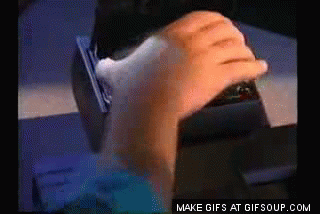Things happened when CD-ROM was introduced to gaming in the late 80s. Look at this new technology, they said! 600-some megabytes — not megabits, megaBYTES — of storage, more than any human being could ever need! Cinematic video with REAL VOICES! And, oh my gosh, actual CD-quality audio played right off the disc itself! Forget those bleeps and bloops from FM synth, you could get actual ORCHESTRAS playing music for a video game! WOOOOOOWWWWW!
Indeed, the moment you’d put on Ys Books I and II for the Turbografx CD and watch the opening cutscenes play, people would be stunned. Game characters were animated and actually talking! The music was amazing! Yet the price tag on CD game technology then was so prohibitive that only the kids with the richest parents could possibly afford it, even after the prices began to come down in the early 90s and more CD consoles began to hit the market. That barrier to entry and the low install base of CD systems made a lot of developers wary of investing significantly in developing CD-based games. More than a few of them opted to take a “safe” route: low-cost ports of cartridge games to CD with some added cutscenes, maybe a handful of new levels or something else taking advantage of additional tech, and, of course, a redone soundtrack. This practice persisted well into the 32-bit generation: you can find quite a few ports of 16-bit console games (and Japanese PC games of the era) to the PlayStation and Saturn, and even the 3DO.
To young game music nerd me, the idea of new soundtracks was perhaps one of the most appealing points of these platforms. I never owned a Turbo CD or Sega CD when they first came out, much less something crazy like a 3DO. But boy, was I ever jealous! I’d beg the people I knew with Sega CDs (because seriously, nobody my age owned a Duo) to record the soundtracks off their games for me onto cassette. Yet somehow, when I actually heard most of this music, I’d come away disappointed more often than not — especially with the redone chiptune music. Something about the chiptune-to-“real”-music conversion just felt off.
Of course, now that I’m older and am not trying to constantly justify my hobby’s legitimacy, I fully understand that sound chips of old hardware are instruments in themselves, capable of producing distinct, powerful sounds that make fantastic songs — these compositions have no need to be orchestrated and played with anything else to be recognized as true music.
Where am I going with all this? Well, I’ve been thinking a lot lately about how these attempts to make “enhanced” chiptune soundtracks frequently turn out to be disappointing — including a fairly recent example, in my opinion, does a disservice to one of my favorite 16-bit-era compositions.

